Whether you plan to keep llamas or alpacas as livestock or pets or simply visit a farm where they are kept, it is important to know how to interact with and treat them properly.
If you’re an owner or someone who stops by, this will make interacting with them much easier and more enjoyable.
Llamas and alpacas enjoy having their heads petted and their necks stroked, but you should wait until the animal is comfortable around you before doing so.
The simplest and most effective way of approaching and interacting with them is to remain calm, kind, and patient.
If you want to bring one into your home or visit a farm where they are kept, you should take the time to learn how to get along with them. In this article, you will learn the basic rules of llama and alpaca etiquette and how to pet them.
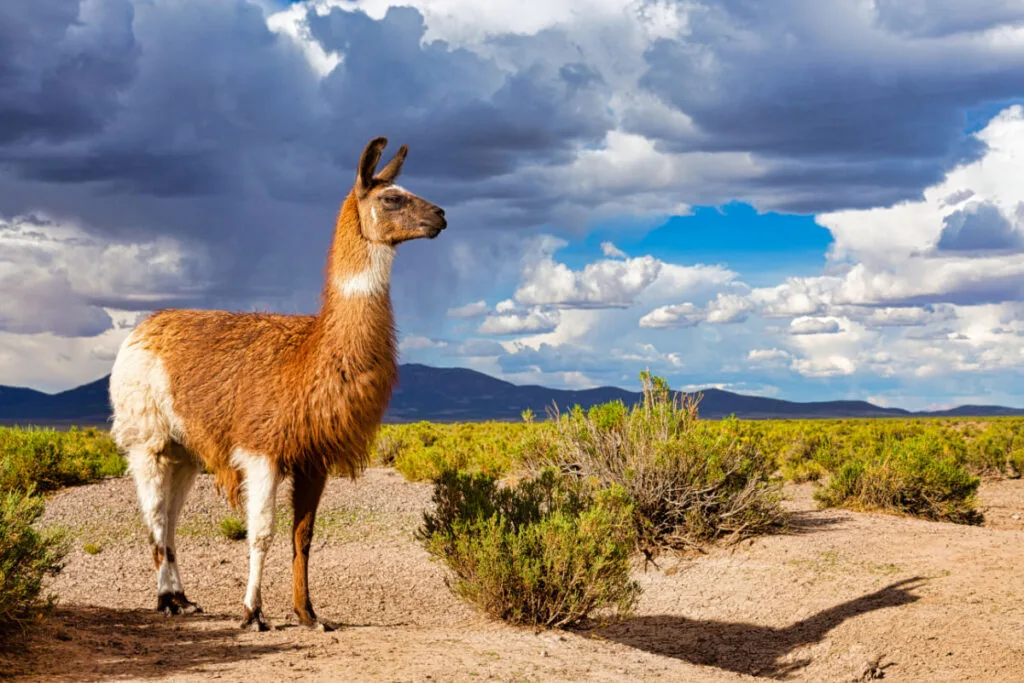
Table of Contents
Always Ask for Permission
Before you go rushing in to pet and cuddle a llama or an alpaca, keep in mind the cardinal rule of interacting with animals you don’t own.
Always ask the owner if petting the animal is okay before doing so.
The owner can also give you pointers on how to approach their furry friend, pet them, and interact with them in a pleasant way for both of you.
You should remember that although llamas and alpacas are usually friendly, there are some exceptions, and you should never touch a strange animal without the owner’s permission.
How to Approach Llamas and Alpacas?
It’s important to treat llamas and alpacas with gentleness and kindness and to avoid doing anything that might cause them to react like prey in danger.
Never sneak up on llamas or alpacas and catch them off-guard. This will not accomplish anything other than frightening them and increasing their mistrust of you.
When you get close, use a soothing tone of voice to let them know you’re a friendly person they can trust.
It’s best to wait until the alpacas or llamas are comfortable around you before attempting any kind of interaction.
They are naturally curious and savvy and allowing them to approach you rather than rushing them can result in very rewarding interactions.
Stay calm. Both the alpaca and the llama are very intelligent and wise. They will pick up on your anxiety and experience it themselves if you remain tense.
If you’re tall, get down to their level when interacting with them. When the animals realize they no longer have reason to fear your towering size, they will feel relieved and more relaxed.
Make an effort to maintain eye contact. Making and maintaining eye contact is essential in all forms of interaction, including those between humans and animals.
Lamas and alpacas respond well to kind words. Even if they don’t understand every word you say, they’ll understand your good intentions.
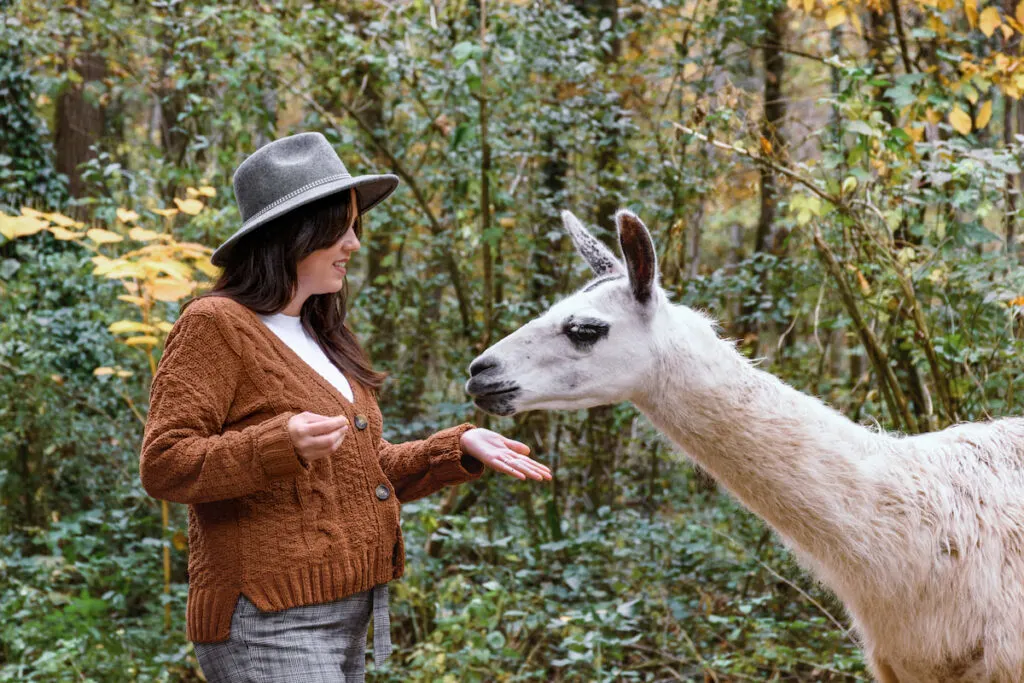
How to Pet a Llama or Alpaca?
When petting an alpaca or llama, the best areas to do so are on the side of the neck, head, and shoulders.
It’s best to use a flat palm when petting llamas or alpacas. Strokes should be long, even, and gentle.
Some of them are particularly fond of being scratched behind the ears as well. Thus, you may try it out.
Avoid any jerky motions, tugging, or pulling on their hair. It’s easy for them to mistake you for a dangerous predator due to such behavior.
If you want to pet llamas or alpacas that haven’t been around people much, be careful about where you do it. Initially, it’s best to limit yourself to stroking the front of the neck.
Because their predators tend to bite their back and the back of the neck, these areas are considered “red zones,” where the animal may experience increased stress if touched.
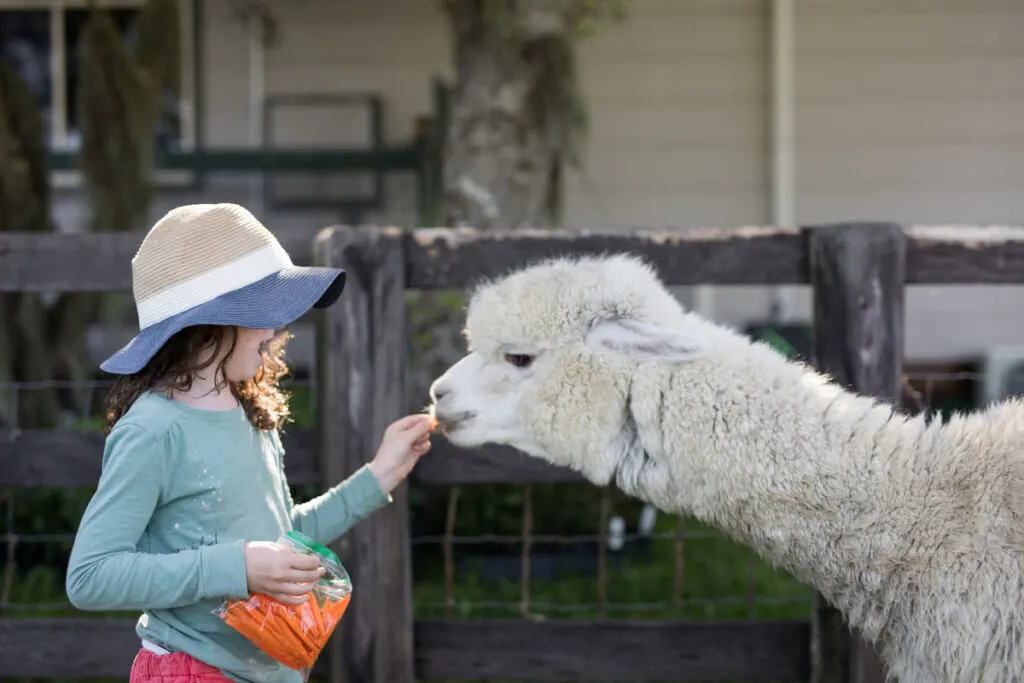
Do Llamas and Alpacas Share the Same Characteristics and Traits?
It’s not uncommon for people to confuse llamas and alpacas because of their similarities.
Physical characteristics stand out most clearly. When compared to alpacas, llamas are noticeably taller and heavier.
However, let’s broaden our understanding a bit.
Llamas have a larger appetite and demand a larger living space than their alpaca cousins. Additionally, they reach maturity at a younger age and live for a longer period of time.
The fiber from an alpaca is incredibly soft and smooth. This wool is the softest, warmest, and coziest available. It does not absorb moisture and will not cause skin irritation.
It is ideally suited for making warm and comfortable clothing such as scarves and hats, but it can also be used to make duvets and blankets of very high quality.
So, in comparison, the quality of llamas’ wool is much lower.
But in general, I would say that those two have more similarities than differences; however, the differences are quite noticeable. Therefore, let’s take a glance at each of them.
Size
The size difference between llamas and alpacas is the first thing you might notice. Llamas are considerably bigger than alpacas.
- Llamas weigh between 200 and 350 pounds and are about 42 to 46 inches tall.
- Alpacas usually weigh between 100 and 175 pounds and are between 34 and 36 inches tall.
Coat
In contrast to the coarser texture of a llama’s hair, the alpaca’s coat of hair is extremely soft and fine.
- The two layers of a llama’s coat—the coarse outer coat and the fine undercoat—are typically inseparable.
- The alpaca has just one layer of its coat, which is made of very fine hair.
Additionally, alpacas’ fiber is denser and grows more quickly than a llama’s hair.
Face
Although both alpacas and llamas have lovely, sweet faces, the two animals are distinct.
- Alpacas have shorter, more compact faces.
- Llamas’ snouts are noticeably longer.
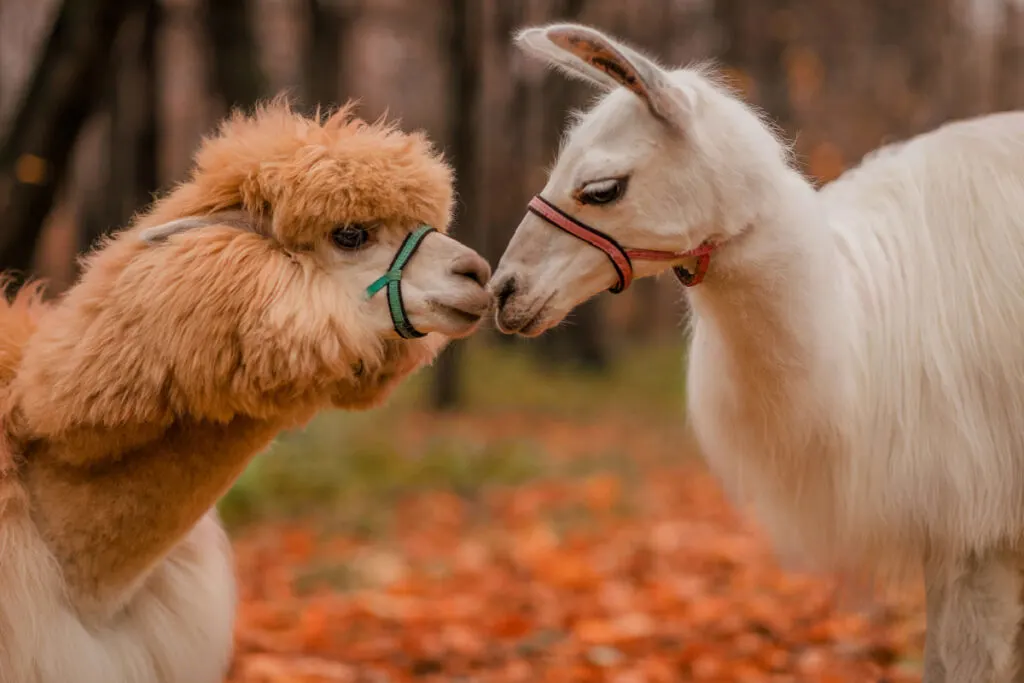
Personality Differences Between Llamas and Alpacas
Although all animals have unique personalities, there are notable differences between these two creatures in terms of their overall behavior.
Llamas are known for their watchful and guardian nature. On the other hand, alpacas are a bit shy and have a more laid-back demeanor.
Both animals are social by nature and have a strong drive to herd.
Alpacas have a reputation for being friendly and tame. However, they are sensitive creatures with negative reactions to harsh treatment or being rushed. Positive reinforcement and a relaxed environment are required for their happiness.
The alpaca is a friendly animal that is good with kids and adults alike because of its calm demeanor and gentle nature.
Stable in temperament, not easily frightened, and consistently upbeat, these animals are a joy to be around.
In general, llamas are much more free-spirited and independent. They’re great as pets because they’re social and bright.
When it comes to keeping a large animal, llamas are among the most enjoyable options.
In addition to being exceptionally smart, they are also very pleasant, kind, and fun to be around. They’re naturally curious creatures who approach strangers with little hesitation.
They are also useful as guard animals for alert livestock like alpacas.
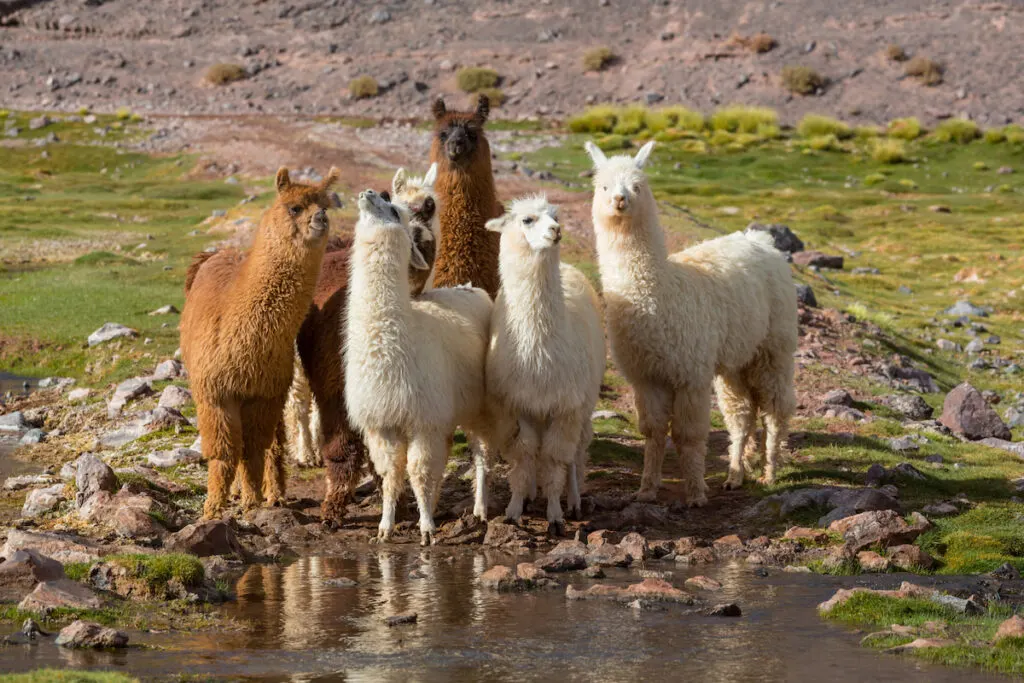
Are Llamas or Alpacas Dangerous?
Llamas and alpacas are typically very docile and won’t cause any harm. However, they may not always be open to being petted or interacting with humans.
You can tell when one needs space if they do any of the following:
- Express displeasure
- Lay their ears back
- Spit
- Emit a warning whistle
- Start intensely humming
Final Thoughts
Llamas and alpacas are great animals to keep as pets and friends.
They have excellent social skills, and their company is delightful. They are naturally friendly and approachable, and their curiosity knows no bounds.
Petting and scratching llamas and alpacas are like candy to them, and they’ll show you even more affection in return.
Due to their placid natures and welcoming personalities, they are quickly gaining popularity as pets. So, if you have the room and time, keeping one can be very rewarding.
Resources
- https://backyardhomesteadhq.com/llamas-the-right-way-to-approach-and-interact-with-them/
- https://campoalpaca.com/blogs/news/10-differences-between-llamas-and-alpacas
- https://www.britannica.com/story/whats-the-difference-between-llamas-and-alpacas
- https://cottoncreekfarms.com/alpacas-vs-llamas/
- https://www.petassure.com/new-newsletters/pet-llamas/
- https://petkeen.com/things-to-know-before-getting-pet-llama-or-alpaca/
- https://cottoncreekfarms.com/alpaca-behavior/
- https://hellohomestead.com/what-llamas-and-alpacas-can-do-for-your-homestead/
- https://cottoncreekfarms.com/alpaca-behavior/
- https://alpacasofmontana.com/blogs/alpaca-husbandry/alpaca-body-language-and-vocalizations
- https://www.treehugger.com/things-you-didnt-know-about-llamas-4863830
